When Will Art Better Imitate Life?
The Importance of Diversity in Entertainment

 Life imitates Art far more than Art imitates Life.” — Oscar Wilde
Life imitates Art far more than Art imitates Life.” — Oscar Wilde
Racial inequality and a lack of representation across nearly every industry and institution are at the forefront of discussions in the U.S. during 2020. The television, film and social media industries have been the focal point of many of these conversations, given the oversized role they play in how we view and get informed about society and equality.
Entertainment has always had the opportunity to drive the narrative of which stories and experiences represent American life. How many of our attitudes and beliefs around what it means to be American come from what we see on television, in movies, or from influencers? For generations, the stories shown were viewed as
a hopeful vision of what life could and should be for all Americans. In this moment it’s become clear that rather than reflect the face of the nation, entertainment in the United States has failed to adequately reflect the experiences of diverse communities – across screens large and small. In fact, even with the considerable gains in representation for minorities in recent years, only 27.6% of film leads in 2019 were minorities. The most recent collected data on scripted broadcast and cable leads from 2016/2017 were even less favorable at 21.5% and 21.3% respectively. These figures, while steadily improving over time, remain well below the 39.9% of the population that would signal equal representation. (UCLA IRLE; U.S. Census)
Thankfully, art in entertainment has begun to take strides towards reflecting the lives of all Americans and provide stories that engage a more diverse group of people. Some of social media’s earliest breakout stars, such as Ryan Higa, Michelle Phan and DeStorm Power, built their audiences by creating captivating content that reflected their unique personalities and experiences. Issa Rae, Lilly Singh, and Liza Koshy have been among the first cross-over stars from YouTube to Hollywood. The second-highest grossing film of 2018, Black Panther, featured a predominantly Black cast, and the Oscar winner for Best Picture the year prior, Moonlight, told the story of a young, gay Black man growing up in an impoverished Miami neighborhood. While 2019’s Best Picture winner, Parasite, was an international film, the success of an all-Korean cast was an inspiration to many Asian Americans, especially following the box office success of 2018’s Crazy Rich Asians. Top-flight writers, producers, and directors such as Shonda Rhimes, Kenya Barris and Ava DuVernay have all signed lucrative multi-show and picture deals over the past few years.
Brands can and should play an essential role in helping a more diverse set of creators get their stories told and their voices heard. Supporting diverse creators early in their careers helps to bring stories and characters to life that are important for all of us to see, hear, and recognize. It also makes business sense: African Americans alone represent over $1.2 trillion in spending power, and Hispanics top $1.7 Trillion. (Nielsen) Even more important, marrying diversity and entertainment marketing strategies allows forward thinking companies to help shape the change we want to see in our country.
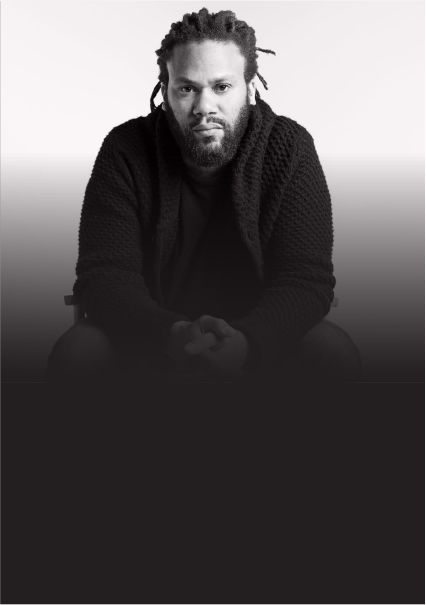
You assume because this has been the case for you thus far that a white writer who went to Dartmouth is better than a black writer who went to Clark Atlanta or Spelman. The conventional wisdom that you assume is wisdom, is more often than not convention. And that is especially true in Hollywood where the convention has been created by people who are in no way shape or form representative of the audience and consumer that they are trying to sell to.
- Franklin Leonard on NPR’sPlanet Money podcast
SPENDING POWER THAT CAN’T BE IGNORED
Hispanics: $1.7 Trillion
African Americans: $1.2 Trillion
Asian Americans $1.2 Trillion

Diverse Content Delivers Diverse Audiences
With minorities already accounting for nearly 40% of the U.S. population and that number projected to rise by about half a percent each year, connecting with diverse audiences will soon become essential for brands to thrive. (U.S. Census)
When stories reflect the diversity of our population, they find an audience. In 2019, the global box office totals and average ROI for Hollywood films that featured a cast between 41% and 50% minorities delivered the largest bucket of revenue for the industry while also ranking #1 on average ROI for studio productions.
This isn’t just restricted to the movie theaters. Netflix, with its deeper pool of diverse content than broadcast television, has attracted minority subscribers at significantly higher rates than white subscribers. Audiences so strongly desire content that they can see themselves reflected in, when it is provided they pay for it.
Social media’s rising and notable stars also reflect a diverse America. From Gorillaphent to Zach King and Nigel Sylverster to Brandi Marie King, content from these creators has taken over nearly every category. Audiences of enthusiasts can find representative faces and voices across lifestyle, gaming, music, fashion and more.
Brands that integrate into content that features real representation also benefit tremendously from the connection audiences have with these stories. Minorites report better recall of product placements and higher purchase intent from integrations into stories with which they identify.
Music videos offer perhaps the clearest example of how brands benefit when they embrace creators who speak authentically and directly to the consumers they’re trying to reach. Considering both brand recall and purchase consideration of brands integrated effectively into music video content shows that these placements are remembered and appreciated by fans of an artist. The resulting lift in purchase consideration delivers the kind of ROI that marketers hope for in all their campaigns.

Films with 41% - 50% Minority Cast Share 1
% of Adults with a Netflix Subscription 2
Remember brands in films or TV shows All/Most of the time 3
More likely to purchase brand/product in a film or show with characters/storylines you identify with 4
2 Statista
3 BEN Diversity in Entertainment Study July 2020
4 BEN Diversity in Entertainment Study July 2020
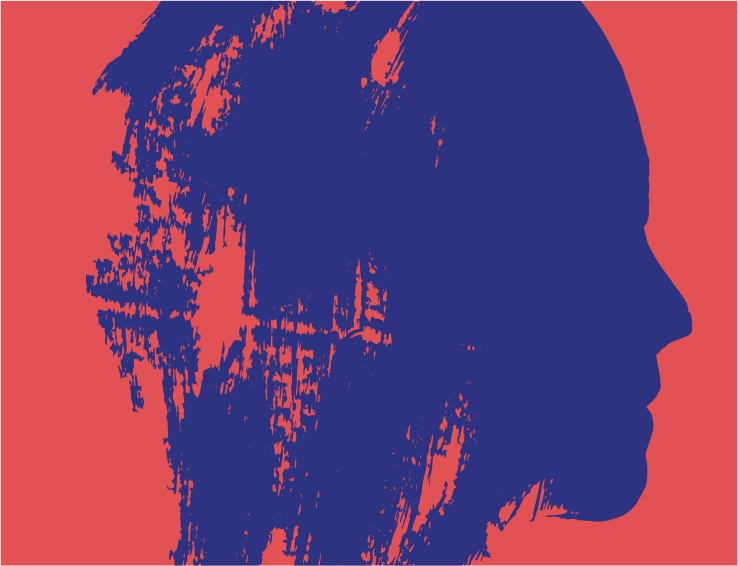
MUSIC VIDEO INTEGRATIONS DELIVER RESULTS
PURCHASE CONSIDERATION

84%
41%

78%
74%

87%
50%

87%
83%

U.S. DEMOGRAPHICS 1
FILM INDUSTRY MINORITY REPRESENTATION 2
(39.9% matches population)
2 UCLA IRLE Hollywood Diversity Report

Empowering Creators to Tell Their Stories
Despite the interest from audiences, Hollywood continues to underdeliver in diversity metrics in every conceivable measurable category. While talent in front of the camera sorely lags in diversity metrics, behind the camera and in the writing room it is even more stark.
Breaking into the industry is hard enough considering that the conventional wisdom has been to hire people who look the way writers, directors and actors traditionally have. Another barrier occurs in the transition, from writer to producer or from on-screen talent to creator and show runner. The role of brands in helping support diverse creators early in their career has never been clearer or more necessary. Through their financial support, brands can make the difference for a creator in getting a show made, a channel launched, a deal done, or a clip just right. Often, this early support leads to long-lasting partnerships.
In helping diverse creators get their voices in front of new audiences, these brands have found a way to reach audiences with their own message – that their products are an important part of the diverse communities whose stories are being told. Two recent examples of how these relationships can benefit both the content creators and the brands involved can be found in the work of Scout Productions and Kaling International.

Equality has been part of Old Navy’s DNA since the brand was founded in 1994, and we believe in showing up on screen in a way that reflects our values. Partnering with a diverse group of creators and storytellers enables us to represent the breadth of our inclusive community and tell authentic stories that resonate with all facets of our audience
- Liat WeingartenOld Navy VP of Brand Communications
Kaling International
Incorporating brands into her breakout show The Mindy Project helped Mindy Kaling make the transition from the writer’s room to the producer’s chair. Kaling’s relationship with Microsoft has extended to each one of her shows, including her recent hit Never Have I Ever. This relationship has benefitted both Kaling and Microsoft.
Scout Productions
Under the leadership and creative direction of David Collins, Michael Williams and Rob Eric, Scout has created and produced hundreds of hours of programming including the groundbreaking pop culture sensation Queer Eye. Queer Eye revolutionized reality television both critically and on the cultural landscape, winning an Emmy, a PGA Award, the Critics Choice Award and two GLAAD Media Awards. Scout’s partnerships with GMC and Old Navy allowed the brands and the show to reach broader audiences and speak to new and more diverse consumers.
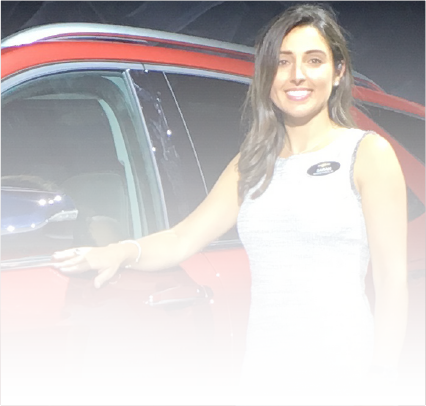
We know it’s important that our customers see people who look like them portrayed on screen, and through its integrations GM strives to align its brands with diverse characters on shows across broadcast, premium cable and streaming.
- Sarah SchrodeGeneral Motors, Branded Entertainment Manager


Representing
where it counts
The greatest insight into how to create and promote the launch of diverse content comes from those who have successfully walked the path already.

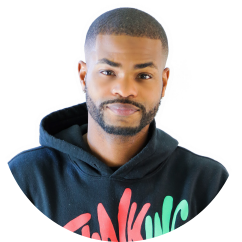
I put my love, passion and out of the box thinking into everything I do and never allow obstacles to stand in my way. When fans come to my page they know they’re going to have fun and laugh. The key is to have fun and others will have fun watching as well.
Content Creator & Actor

Authenticity is key when marketing to the Latinx audience. It’s not about checking a one-dimensional, often stereotypical box, it’s about empowering with storylines and characters created by and for that audience, that are truly reflective of the diverse Latinx experience.
BEN Senior Account Manager,
Client Services

Supporting diverse creators will not go unnoticed. Brands truly have the opportunity to elevate the work and the passion of these creators who are often overlooked or categorized based on bias, perceptions and stereotypes. When a brand gives an opportunity to creators who are Black, Latino, Asian, etc., they are ultimately providing these creators an opportunity to feel recognized and further allow them to take the stage in sharing their content, their story.
BEN Digital Account Manager
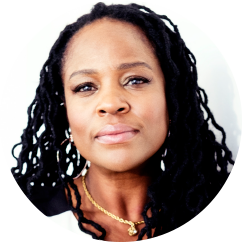
By empowering diverse content creators, brands stand to garner a unique kind of brand loyalty that has the power to redefine their perception in the general market.
BEN Director, Integration Strategy & Business
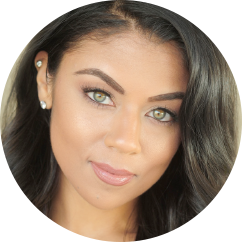
Working with top brands in the world like Disney and Apple gives me exposure, experience and exclusive opportunities. I’ve worked with top people in the industry that has led to lasting relationships.
Content Creator & Actress

When It comes to pursuing a professional athletic career in the action sports industry, being sponsored by brands plays a significant role. Working with the right brands that share similar interests and goals, often leads to a healthy business relationship, sparks innovation, which produces meaningful collaborations. I’m incredibly grateful that throughout my career, I’ve been able to secure partnerships with some of the most successful brands in the world; brands that respect, love, and understand my creative process as well as my position within the culture.
Professional Bicycle Athlete and Content Creator

I think when people see stories told by and about people who look like them, it makes them feel powerful, like their existence is seen and validated. It’s the “if you can see it you can be it” concept, and I know first hand that it’s true.
Emmy-nominated Cinematographer
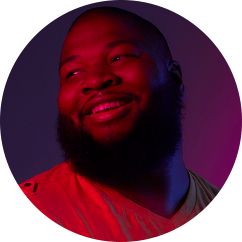
My positive message has always been the same. Be you and be the best you that you can be every day. Know who you are and love yourself and don’t let anyone take away your shine.
Content Creator

The expanding content landscape has provided an opportunity for young and diverse voices that may not have been possible just a few short years ago. This opportunity allows us to experience this content, react to it and prove that it can captivate audiences regardless of your background. There’s never been a better time for brands to work with storytellers and be a part of content that truly reflects the world we live in.
BEN Executive Director, Brand Integration

We’ve developed our AI to make predictions based on performance, not assumptions. Our algorithms don’t care about a creator’s color, gender, or sexual orientation – they’ve been trained to simply identify channels that will drive ROI, and to constantly get smarter about what works best for that brand and what doesn’t.”
After switching to a campaign made up primarily of these channels, the click-through-rate on Philo’s campaign improved by 172% and subscription conversion efficiency increased by 10x. Even better, the discovery of these new audiences led to adjustments in Philo’s overall marketing strategy to further target diverse audiences.
When these learnings form the foundation of a custom algorithm for a brand, the results can be even more startling. Over a six month period during 2020, the custom algorithm that BEN developed for Philo drove a 51% decrease in customer acquisition costs for the streaming service.
In addition, AI can help brands find channels with similar audiences, aesthetics, and healthy growth. Using these tools, brands are able to identify emerging social media stars who both reflect their values and are predicted to be effective messengers for their products.

USING AI TO COMBAT BIAS
Supporting diverse creators is only part of the challenge that lies ahead. Ensuring that bias is removed from every step of the content creation process is essential, and is an area where data and artificial intelligence (AI) can play a role.
AI can help brands find hidden audiences within the entertainment marketing space. When Philo began using influencers to bolster its marketing efforts in 2019, it targeted the 18-34 year-old men that it presumed would be its best customers. BEN’s AI found something different: its algorithms predicted that channels featuring Black mothers, LGBTQ vloggers and interior designers would result in the most conversions – and most loyal customers – for Philo.

PHILO CASE STUDY
BEN AI Creation of customized model for Philo led to…
Improved CTR by 172%
Subscription conversions increased by 10x
51% reduction in customer acquisition costs
Source BEN


KEY
TAKEAWAYS
1
Brands can play an important role in helping bring diverse stories to large and small screens.
2
Audiences engage more strongly with content – and with the brands inside that content – that they see themselves reflected in.
3
Accepting and addressing inherent biases in the entertainment industry will lead to better consumer connection for the industry and the brands that support creators.
4
Authenticity and honoring the creator’s place within culture is essential. Brand partnerships that start early in a creator’s career can help them reach new heights and build long-lasting partnerships.
5
AI can help brands remove bias, find new audiences, deliver better efficiencies and facilitate better consumer connection.